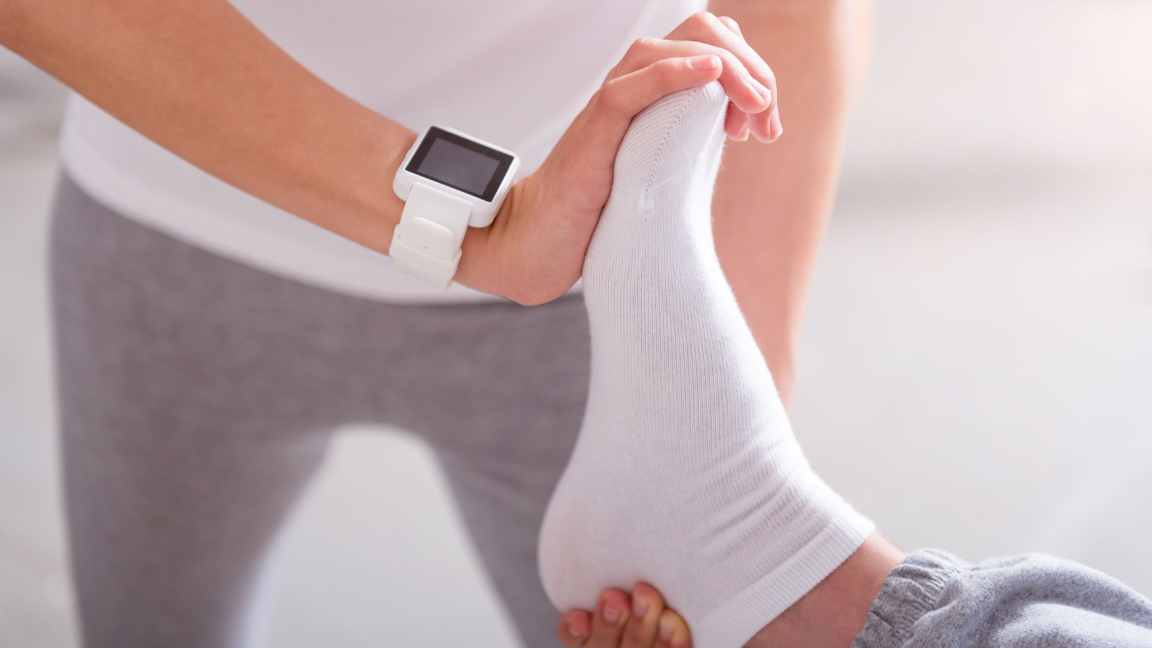
Case Study
How a ‘smart implant’ could help joint replacement patients with recovery
Date: May 10, 2022
A new device able to reliably monitor a patient’s recovery following joint replacement will soon be ready for regulatory approval.
The device can continuously measure and record force and motion and is small enough to be included into existing implants.
In trials in cadavers and in vitro studies, the device has been shown to measure forces accurately. The researchers have pioneered circuit technology that allows the sensor to communicate results to both patients and clinicians.
The research team partnered with one of the largest orthopaedics companies in the world at an early stage of the process. The company is keen to incorporate it into their existing devices and will be leading on commercialisation development of the technology.
Thanks to funding from Versus Arthritis in partnership with the IKC, the partners now have a working prototype which they plan to develop further, including safety tests for CE purposes, before applying for MHRA approval. The next step will be for first in human trials.
Dr Bernard van Duren, an engineer, surgeon and academic clinical lecturer at the University of Leeds (working at the Leeds Institute of Rheumatic and Musculoskeletal Medicine), is part of the research team developing the device. He says: “The IKC has been a big support to us, particularly Graeme Howling, who has joined our team and been essential in running the project.
“We knew from the start that it would be crucial to get the right company partner on board; too many good ideas get lost in academia because they fail to find industry support. But the IKC’s connections have regularly pointed us in the right direction and have helped navigate things smoothly between the university and the orthopaedics company to keep development of the device on track.”
Early intervention
Activity after a joint replacement operation is crucial, but patients often find it difficult to tailor their recovery or know what is required. Yet it is challenging to monitor a patient’s recovery reliably, since after initial physiotherapy sessions they will be left on their own to continue. By empowering the patient to monitor their own progress, the device could provide useful reassurance or indicate when they should seek additional help.
Dr Van Duren explains: “This is about getting patients back on their feet successfully. A device that allows continuous data to be gathered and stored remotely would be a significant step towards better understanding a patient’s recovery and allow early intervention if needed – whether that might be targeted physiotherapy, advice on exercising, or medical attention to a more serious problem.”
Personalised medicine
It’s hoped that the device will contribute to the growing push towards ‘personalised medicine’ by improving patient recovery and interaction, improving timely interventions and reducing unnecessary stays in hospitals, all leading to better results for patients.
The sensor could ultimately also be used in similar operations on other joint of the body. It’s an exciting prospect, says Dr Van Duren. “This could be the start of an entirely new field involving active implants that talk to computers. Something like this is bringing precision medicine a step closer.”
The IKC Versus Arthritis partnership has awarded nearly £2m funding to 22 projects, leading to the patenting of two technologies. The sensor is one of two technologies supported through the partnership that are undergoing regulatory approval, with another two already in clinical trials.
Angela Davies, Head of Research Engagement at Versus Arthritis said: “For many people with arthritis, joint replacement surgery is the only option available to end their pain. Joint replacements can work brilliantly to give people their quality of life back, but the right support and advice is needed to ensure a healthy recovery.
“This technology could enable much more personalised care than is possible today by tracking a person’s recovery from inside the joint, allowing surgeons to tailor support in incredible detail. This could improve the outcomes of an already highly successful type of surgery, and give people with arthritis a better chance of living free from pain.”
Back to Case Studies
